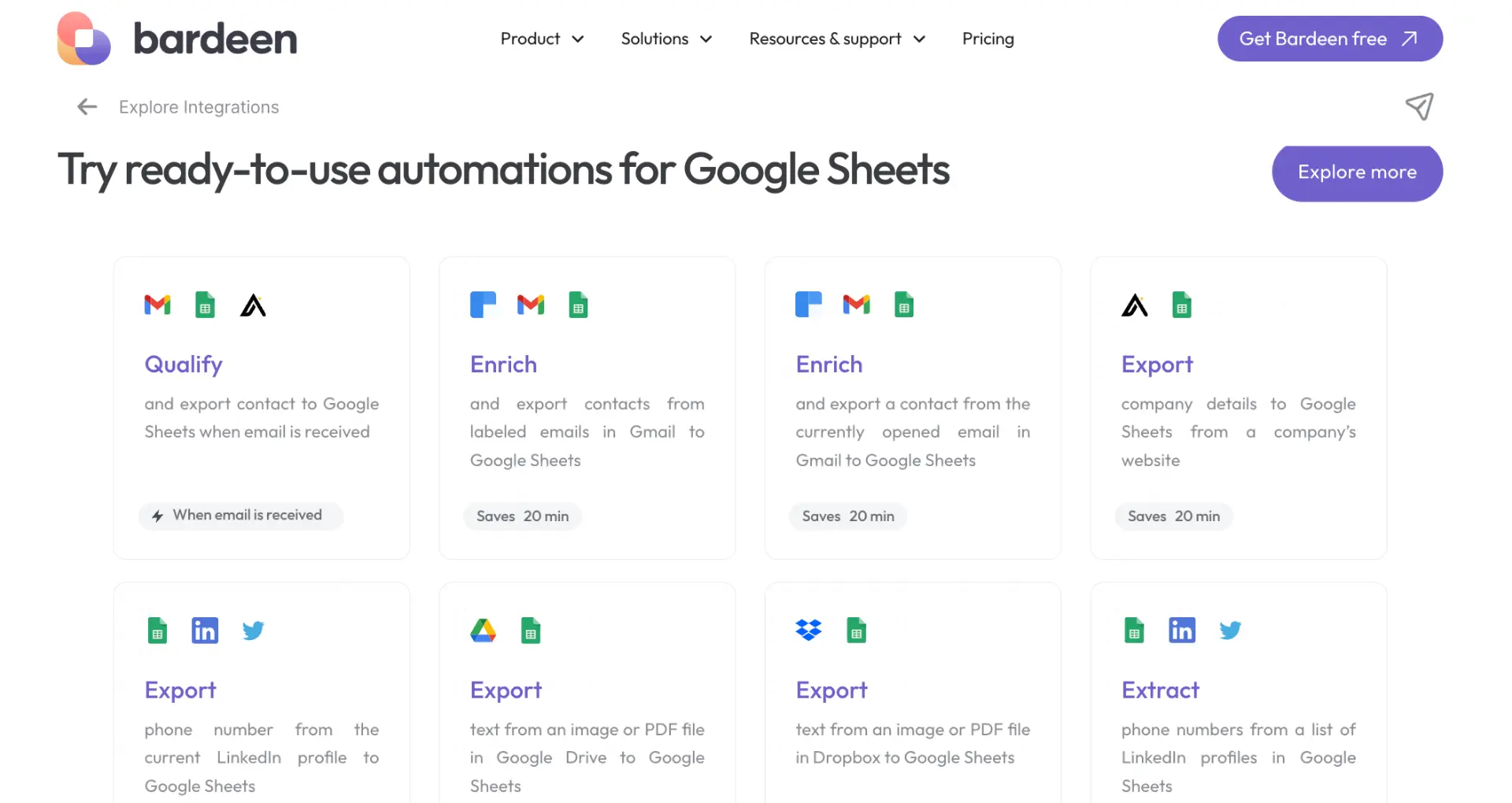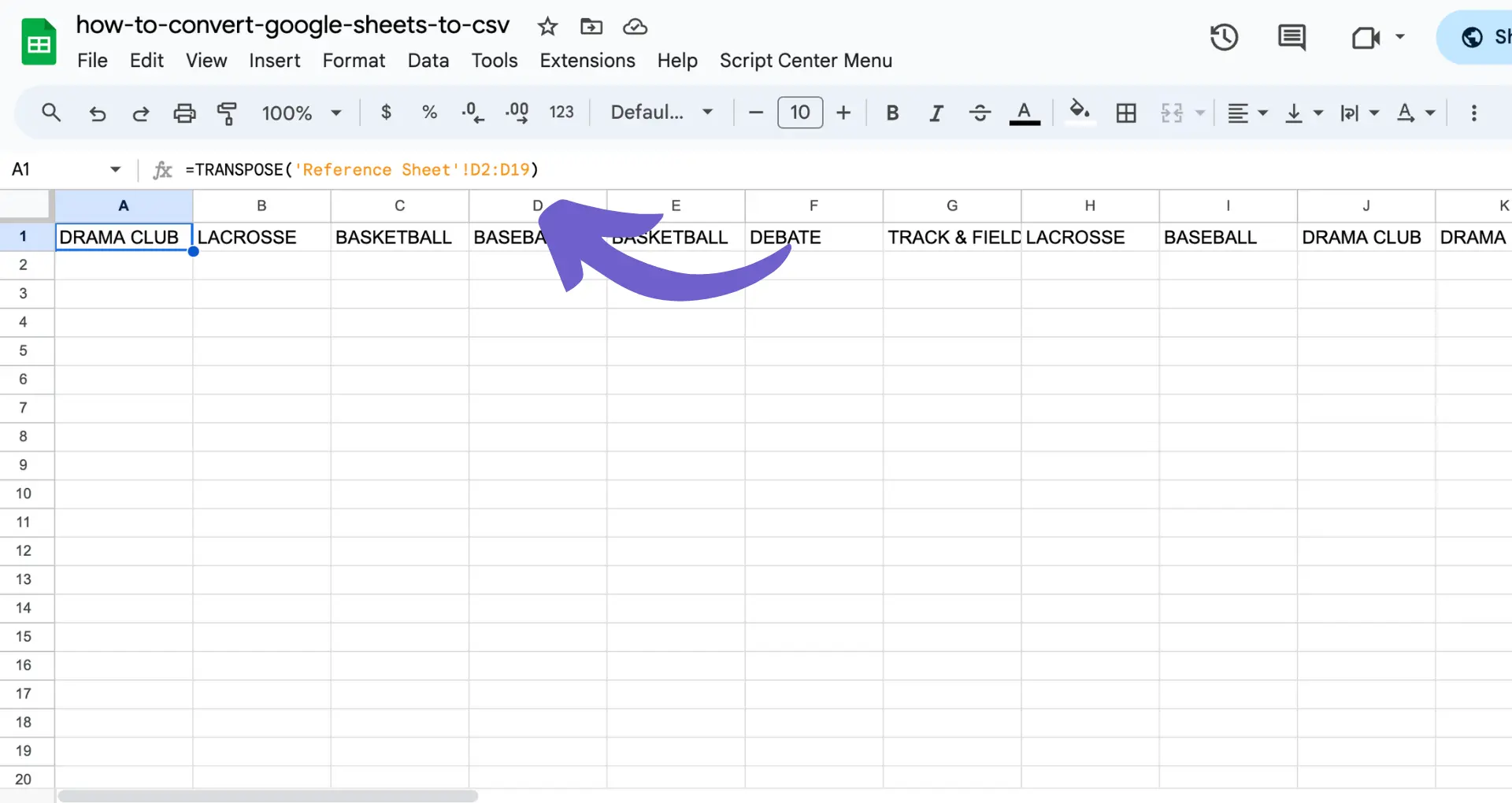Use the TRANSPOSE function or Paste Special to transpose data in Google Sheets.
By the way, we're Bardeen, we build a free AI Agent for doing repetitive tasks.
If you work with Google Sheets, you'll love our Google Sheets automations. They can automate data entry, formatting, and much more.
How to Convert Row to Column in Google Sheets
Converting rows to columns in Google Sheets, also known as transposing data, is a common task that can help reorganize your data for better analysis and presentation. This guide covers several methods to achieve this, including using the TRANSPOSE function and the Paste Special option.
Automate your Google Sheets tasks with Bardeen to save time and enhance productivity. Download the Bardeen app today!

Google Sheets Transpose
The TRANSPOSE function in Google Sheets is designed to swap rows and columns of an array or range of cells. This function is particularly useful when you need to rotate your data layout without manually copying and pasting information. To use the TRANSPOSE function:
- Click on the cell where you want the transposed data to begin.
- Enter the formula '=TRANSPOSE(array_or_range)', replacing 'array_or_range' with the actual range you want to transpose (e.g., A1:B10).
- Press Enter, and your data will be transposed accordingly.

It's important to note that the TRANSPOSE function works with rectangular data ranges, meaning the number of columns in the input range should match the number of rows in the output range, and vice versa.
How to Transpose in Google Sheets
Another method to transpose data is using the Paste Special feature. This method is ideal for a one-time conversion of data layout. Here's how to do it:
- Select the dataset you want to transpose, including headers, and copy it (Ctrl+C or Command+C).
- Click on the destination cell where you want the transposed data to begin.
- Right-click the destination cell and select 'Paste Special' from the context menu.
- Choose 'Transpose' from the list of Paste Special options. Your data will be transposed at the specified destination.

This method creates a static transposed range, meaning any changes in the original data will not reflect in the transposed range. If you require a dynamic solution where changes in the original data automatically update in the transposed data, use the TRANSPOSE function.
Google Sheets Convert Row to Column
For those looking for an automated solution to transpose data, Google Sheets offers AI-powered tools like Coefficient's Formula Builder. This tool can generate the TRANSPOSE formula based on a simple description of what you need. To use it:
- Install Coefficient and launch it from the Extensions menu in Google Sheets.
- Select GPT Copilot on the Coefficient sidebar and click Formula Builder.
- Type a description of the formula you need, for example, 'Convert rows to columns in Sheet5 cells A1:C4'.
- Press 'Build', and the tool will generate the TRANSPOSE formula for you.
- Paste the generated formula in the desired cell to transpose your data.
This method is particularly useful for those who are not familiar with Google Sheets functions or prefer a more automated approach.
Learn more about addons for Google Sheets and how to automate Google Sheets tasks. Explore our collection of Google Sheets automations.
Convert Row to Column in Google Sheets
Transposing data in Google Sheets is a straightforward process that can be accomplished through different methods depending on your needs. Whether you choose to use the TRANSPOSE function, Paste Special, or an AI-powered tool like Coefficient's Formula Builder, each method provides a way to efficiently reorient your data for better analysis and presentation.
Automate Your Google Sheets with Bardeen Playbooks
While manually converting rows to columns in Google Sheets is straightforward, automating this process can significantly enhance productivity, especially when dealing with large datasets or frequent updates. Bardeen offers a range of playbooks to streamline your Google Sheets tasks, ensuring data accuracy and saving valuable time.
- Add row in Google Sheets when Asana task is created: This playbook automates the process of updating your Google Sheets with new tasks from Asana, perfect for project management and tracking.
- Get rows from a Coda table and add them to Google Sheets: Seamlessly transfer data from Coda to Google Sheets, automating the synchronization of information between your documents and spreadsheets.
- Copy an Airtable to Google Sheets: This playbook simplifies the process of migrating data from Airtable to Google Sheets, facilitating a smoother data management experience.
Embrace the power of automation by downloading the Bardeen app at Bardeen.ai/download to transform how you manage data in Google Sheets.






.svg)
.svg)
.svg)
